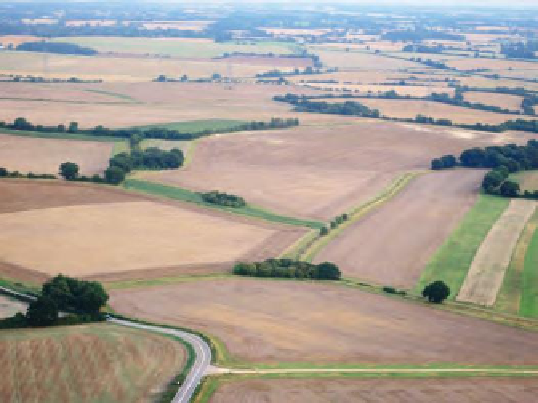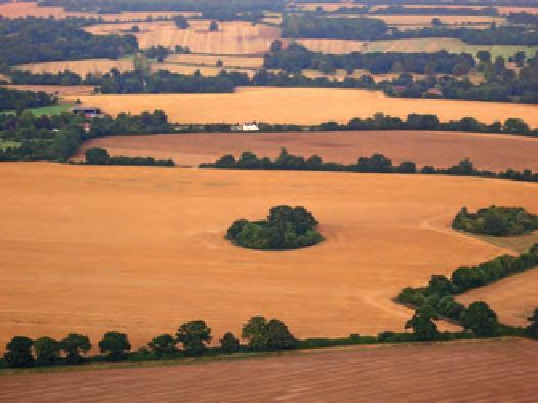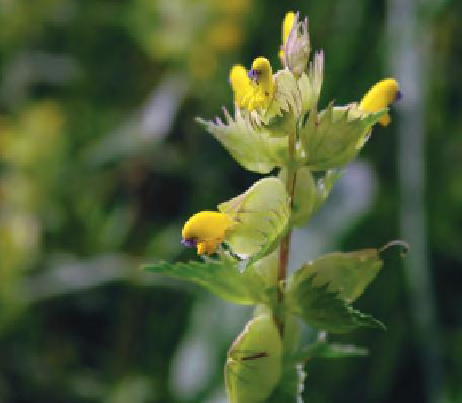Agriculture Reference
In-Depth Information
3
(a)
(b)
Figure 3.19
(a) Disrupted 'green corridors' in farmland where hedgerows have been removed; (b) farming has
also left fragments of disconnected woodland
Yellow rattle
Yellow rattle (
Rhinanthus minor
) is named after
its large seeds which rattle in their pods when
dry. It was also called 'catch all' by farmers as
it was a weed of hay meadows, which reduced
yields and was spread in haymaking. The plant
is an annual hemiparasite that feeds on the
roots of coarse grasses and leguminous plants
but can also photosynthesize. It can reduce
grass biomass by up to 80% and allows less
competitive wild flower species to establish
and compete more effectively. Yellow rattle
seed is often incorporated into wild flower
seed mixes.
(b)
Figure 3.20
(a) Yellow rattle; (b) note the species-
diverse area in foreground containing yellow rattle
compared with the area of coarse grasses behind
X
Plant selection
.
As primary producers, plants are
the foundation of the living component of a garden.
They provide food in the form of nectar, pollen,
seeds, fruits and green leafy material so should be
chosen to supply these useful 'products' over the
longest period of time, in particular by including
winter-l owering plants such as
Viburnum tinus
and
Mahonia. Hedera helix
(ivy) (Figure 3.21) is
one of the best plants for wildlife in the garden. It
provides evergreen foliage for nesting and shelter
for small birds and insects, and it fl owers and fruits
late in the season when there are few other nectar
and pollen sources available.
X
Cultivated plants with double fl owers should be
avoided as the male and female fl ower parts are
converted into extra petals unlike the wild forms
(a)




















